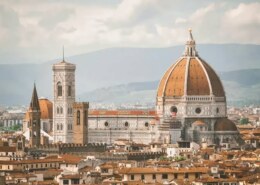From the mudbrick settlements of Mesopotamia to the bustling global capitals of today, cities have shaped the course of human history. They are living museums, layered with centuries of architecture, innovation, conflict, and culture. But how did these urban centers come to be? And what can their evolution teach us about the world we live in now?
In this post, we take a journey through time to explore the origins and transformations of some of the world’s most iconic historic cities.
The Dawn of Urban Life
Long before skyscrapers and subways, early humans began gathering in settlements that would lay the foundations for future cities. Around 7500 BCE, in what is now Turkey, Çatalhöyük stood as one of the earliest known examples of an urban center. Built with tightly packed homes and no streets, this Neolithic community relied on rooftop access and communal living—an early sign of human adaptation to urban life.
Not far away in the Fertile Crescent, cities like Uruk (modern-day Iraq) emerged as centers of trade, worship, and governance. Here, the first known writing system—cuneiform—was developed, enabling record-keeping and the management of complex societies.
The Rise of Ancient Civilizations
As civilizations matured, so did their cities. In the Indus Valley, Mohenjo-Daro and Harappa (around 2500 BCE) boasted advanced drainage systems, organized street grids, and public baths—remarkably sophisticated for their time.
Meanwhile, in Egypt, cities like Thebes and Memphis flourished along the Nile, serving as capitals for pharaohs and religious centers adorned with temples and pyramids. In China, cities such as Anyang, capital of the Shang Dynasty, featured royal tombs, palaces, and early examples of urban planning.
Cities of the Classical World
The classical era saw cities become epicenters of culture, politics, and philosophy. Athens, the heart of ancient Greece, gave the world democracy and some of the most influential thinkers in history. Rome, on the other hand, engineered an urban empire, complete with aqueducts, public baths, amphitheaters, and roads that connected a vast territory across Europe and the Mediterranean.
Elsewhere, cities like Alexandria in Egypt and Carthage in North Africa became hubs of trade, knowledge, and conflict—testaments to how geography and ambition fueled urban growth.
Medieval and Islamic Golden Age Cities
The fall of Rome shifted the urban spotlight eastward. Constantinople (modern-day Istanbul) emerged as a bridge between Europe and Asia, blending Roman, Christian, and later Islamic influences.
During the Islamic Golden Age, cities such as Baghdad and Córdoba thrived as centers of learning, science, and architecture. Baghdad’s “House of Wisdom” attracted scholars from around the world, while Córdoba dazzled with libraries, palaces, and a society where Muslim, Christian, and Jewish cultures coexisted.
Renaissance, Colonialism, and Global Expansion
In Europe, the Renaissance transformed cities like Florence and Venice into vibrant hubs of art, commerce, and political thought. Further west, Paris and London began to grow into the powerful capitals they are today, fueled by trade, innovation, and imperial ambition.
Colonialism reshaped urban landscapes across the world. In the Americas, Mexico City rose atop the ruins of the Aztec capital Tenochtitlan. In South Asia, cities like Mumbai were transformed by British colonial rule, blending European and Indian influences in their architecture and infrastructure.
Industrialization and the Modern Megacity
The 19th and 20th centuries saw cities explode in size and complexity. Manchester and Detroit became symbols of industrial might and working-class struggle. In New York City, waves of immigrants helped forge one of the most culturally diverse metropolises in the world.
Cities like Tokyo morphed from historical capitals into modern technological powerhouses, often blending the ancient with the futuristic in dramatic ways.
Preserving the Past, Planning the Future
Today, historic cities face new challenges: gentrification, climate change, and the pressure to modernize. Yet many are also leading the way in urban resilience and cultural preservation. Organizations like UNESCO help protect historic districts, while local efforts aim to retain the character of old neighborhoods in the face of rapid development.
As we look to the future, the story of historic cities is more relevant than ever. They remind us that the way we build, live, and govern isn’t fixed—it’s the product of centuries of experimentation, conflict, and creativity.
Conclusion
Historic cities are more than tourist attractions; they are windows into our collective past. Each alley, wall, and skyline tells a story—of migration, invention, and adaptation. By understanding how cities have evolved, we not only gain insight into history but also clues about how to shape the urban landscapes of tomorrow.

